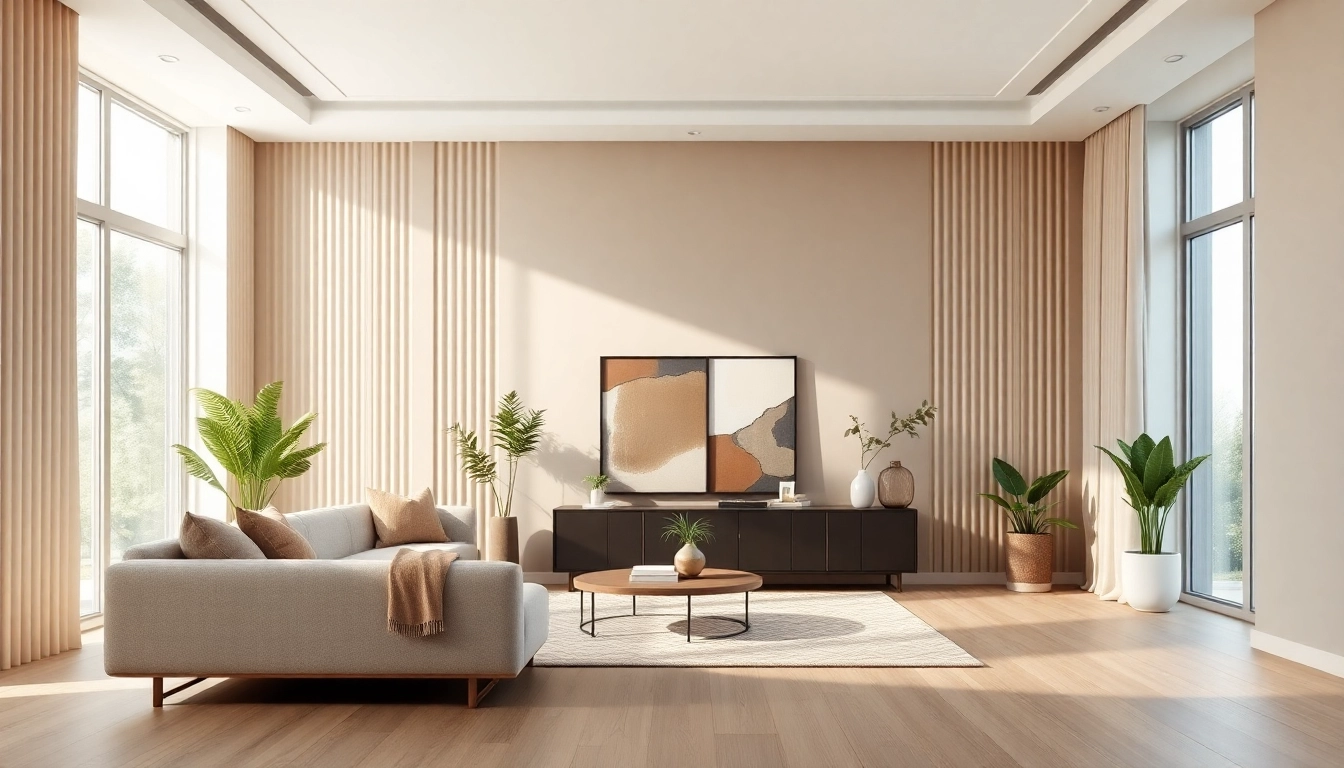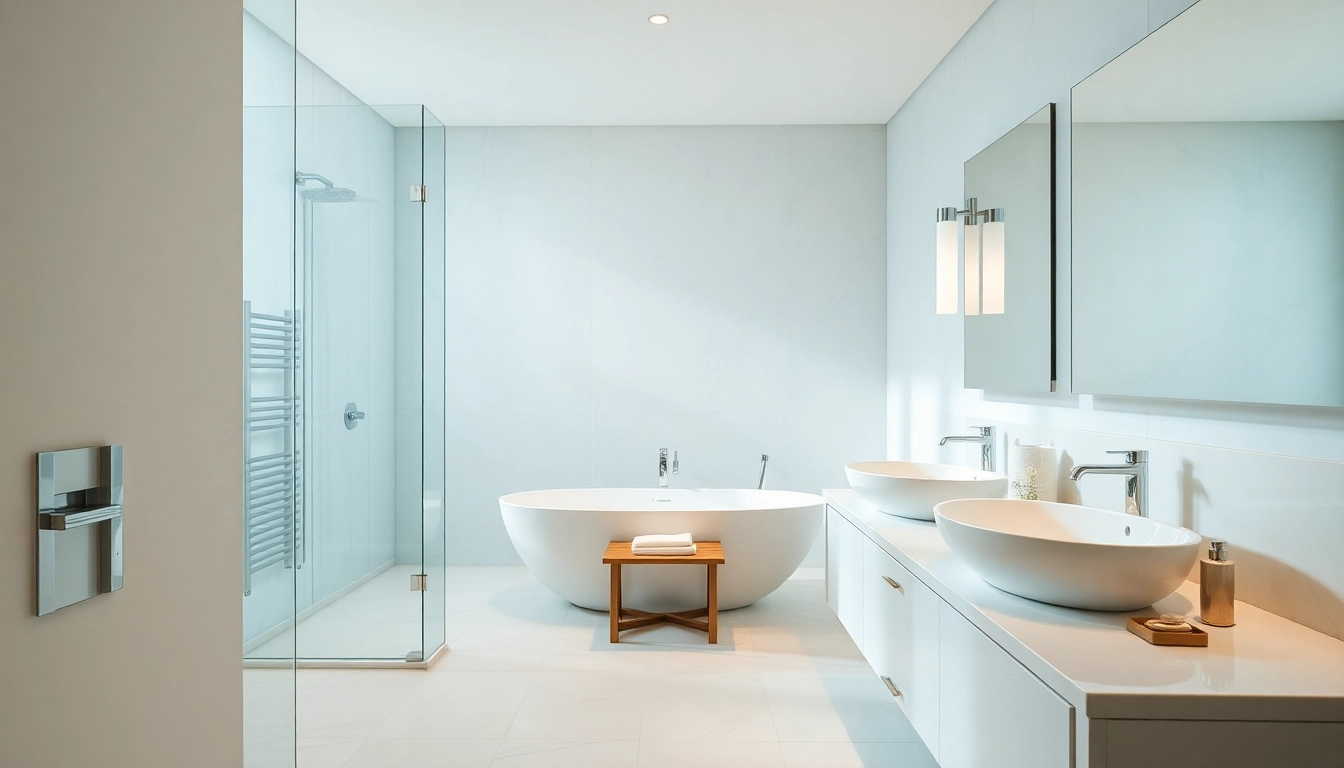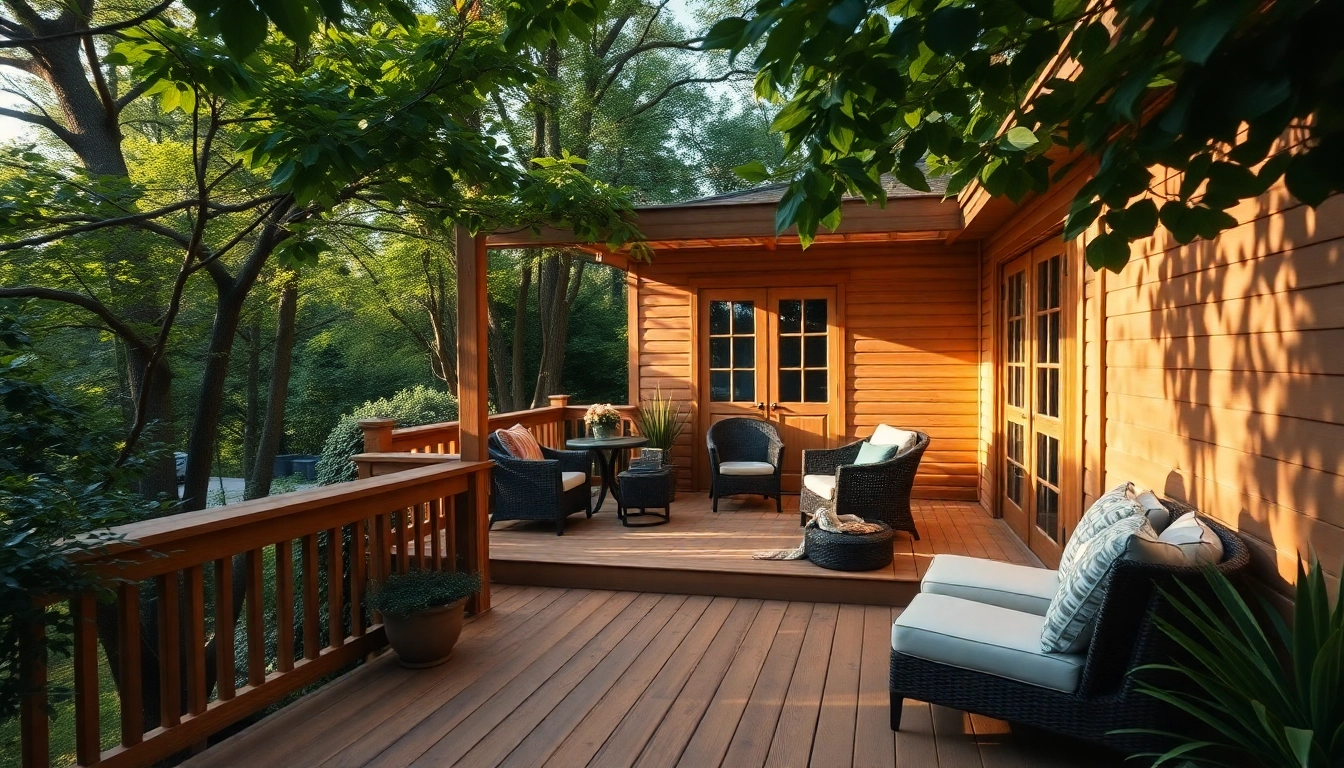Introduction to Fluted Panels
In recent years, interior design has witnessed a remarkable shift towards textured and dynamic surfaces, with fluted panels emerging as a popular choice among architects and homeowners alike. These innovative wall treatments draw the eye and add a tactile quality to both residential and commercial spaces. If you’re looking to transform your decor, fluted panels might just be the perfect solution. In this comprehensive guide, we will explore the various aspects of fluted panels, their benefits, installation techniques, and how to incorporate them into your decor effectively.
What Are Fluted Panels?
Fluted panels are a type of decorative panel characterized by their vertical or horizontal grooves or channels. These indentations create a series of repeating lines that can embellish any flat surface. Typically made from wood, MDF, or other composite materials, fluted panels can be used in variety of settings—from accent walls to furniture design—allowing for versatility in application and aesthetics.
History and Design Evolution
The concept of fluted surfaces is deeply rooted in classical architecture. Historically, fluted columns were prevalent in Greek temples and Roman structures, symbolizing grandeur and elegance. As architectural styles evolved through the Renaissance and Baroque periods, so did the application of fluted designs. Recently, the resurgence of mid-century modern and contemporary styles has led to a renewed interest in fluted panels as a means to connect traditional craftsmanship with modern aesthetics.
Benefits of Using Fluted Panels
Fluted panels offer several advantages that make them a smart addition to any design project:
- Aesthetic Appeal: The unique grooved texture adds depth and interest to flat surfaces, instantly elevating the visual appeal of a room.
- Versatility: Fluted panels can be used in various applications—from feature walls and room dividers to ceilings and custom furniture.
- Enhanced Spatial Perception: The vertical lines create an illusion of height, making spaces appear larger and more open.
- Sound Absorption: Fluted surfaces can help in sound management, making them ideal for spaces where acoustics matter.
- Easy Maintenance: Compared to other decorative elements, fluted panels are relatively easy to clean and maintain.
Choosing the Right Fluted Panels for Your Space
When considering the integration of fluted panels into your design, it’s essential to choose the right materials and finishes, as well as tailor your selection to specific room types.
Materials and Finishes
The materials you choose for your fluted panels can significantly impact the overall aesthetic and functionality. Here are some popular options:
- Wood: Natural wood provides warmth and texture, making it ideal for traditional and contemporary spaces. Options include oak, walnut, and birch, each offering unique grains and tones.
- MDF: Medium-density fiberboard is a popular choice for budget-sensitive projects. It can be easily painted or coated to achieve various finishes.
- Wood Veneer: Veneers simulate the look of solid wood at a fraction of the cost, allowing for beautiful designs without the commitment of solid wood.
- Metal or PVC: For a more industrial or modern look, consider metal or PVC fluted panels, which are durable and often easier to install.
Selection for Different Room Types
The selection process for fluted panels may differ based on the intended application. Here are tailored suggestions for popular interior spaces:
- Living Rooms: Consider using wooden fluted panels to create a cozy accent wall or a sophisticated backdrop for your media center.
- Bedrooms: Soft finishes in muted colors can add a serene feel to bedrooms, enhancing relaxation and comfort.
- Commercial Spaces: In offices or retail environments, sleek and modern fluted panels can serve as stylish dividers while promoting a professional atmosphere.
- Dining Areas: Use fluted panels to add elegance to dining rooms, perhaps as backdrop for a buffet table or an accent wall behind the dining set.
Color and Texture Considerations
When it comes to color and texture, fluted panels offer flexibility. Light shades can open a space, while darker hues can create warmth and intimacy. Additionally, consider the texture of the panels: a smooth surface may offer contemporary appeal, whereas a rough finish may evoke a rustic atmosphere. Think about the existing color palette of your room to ensure cohesion.
Installation and Maintenance of Fluted Panels
Understanding how to properly install and maintain fluted panels is crucial for ensuring their longevity and visual impact.
Pre-Installation Planning
Before installing fluted panels, thorough pre-planning is necessary:
- Measurements: Accurately measure the area where the panels will be installed. This will determine how many panels you’ll need and if they’ll require cutting.
- Design Layout: Create a design layout that complements your space, considering the pattern of grooves and the direction (horizontal or vertical) that suits the aesthetic.
- Tools Required: Gather all needed tools, which generally include a level, measuring tape, adhesive, or nails, and a saw for trimming panels.
Step-by-Step Installation Guide
Follow this step-by-step guide to install fluted panels successfully:
- Prepare the Surface: Ensure that the wall surface is clean, smooth, and dry, free of dust and debris.
- Mark Guidelines: Using a level, mark guidelines on the wall to ensure your panels are aligned properly.
- Cut Panels if Necessary: Depending on your measurements, cut the panels to size using a saw. Always wear protective eyewear during this step.
- Apply Adhesive: Apply construction adhesive to the back of the panel. If using nails, ensure they are appropriate for your wall type and use a nail gun or hammer to secure the panels.
- Position the Panel: Press the panel against the wall, aligning it with your marked guidelines. Use a level to ensure it is straight.
- Continue Installation: Repeat the process with each subsequent panel, ensuring that the seams align neatly.
- Finish Edges: After all panels are installed, finish the edges with trim if desired for a polished look.
Maintenance Tips for Longevity
To keep your fluted panels looking pristine, follow these maintenance tips:
- Regular Cleaning: Dust the panels regularly with a soft cloth. For deeper cleaning, dampen the cloth with mild soap and water.
- Avoid Excess Water: Be cautious of excess moisture, as it can warp wooden panels. Wipe up spills immediately.
- Check for Damage: Periodically inspect the panels for any signs of wear or damage. Address scratches with appropriate wood filler or touch-up paint.
Fluted Panels in Interior Design Trends
Fluted panels are not just functional; they have become a significant trend in modern interior design. Understanding current styles and how to blend them will ensure your space remains chic and up-to-date.
Current Decor Styles Featuring Fluted Panels
Various decor styles have embraced fluted panels. Here are a few noteworthy trends:
- Minimalism: Clean lines and simple forms dominate this style, with fluted panels providing subtle texture without overwhelming the senses.
- Scandinavian: Combining functionality with minimalism, Scandinavian designs use fluted panels to add warmth and natural beauty to spaces.
- Art Deco: Characterized by bold geometry and luxury, art deco interiors utilize fluted panels to accentuate curves and create a sense of opulence.
Incorporating Fluted Panels with Other Materials
One of the exciting aspects of fluted panels is their ability to complement various materials:
- Glass: Pairing fluted wood panels with glass can create a sophisticated atmosphere, allowing for light to play off the textures.
- Metal: Combining fluted panels with metal accents or fixtures can provide a modern edge, promoting a dynamic contrast.
- Textiles: Incorporate soft textiles, like upholstered furniture or fabric wall hangings, to balance the hard surfaces of fluted panels.
Creating a Cohesive Look with Fluted Panels
To create a harmonious and cohesive atmosphere, consider the following strategies:
- Color Harmony: Ensure a consistent color palette across all elements in the room, including fluted panels, paint, and furniture.
- Consistent Patterns: Use complementary patterns that resonate with the lines of the fluted panels, such as geometric rugs or cushions.
- Lighting: Adequate lighting can enhance the beauty of fluted panels. Consider ambient lighting that highlights their textures and shapes.
Case Studies and Examples
Seeing fluted panels in action can inspire you to integrate them into your spaces. Below are case studies and examples of successful applications of fluted panels.
Residential Spaces Using Fluted Panels
Many homeowners have successfully achieved transformation through fluted panels:
- Living Room Makeover: In a recent project, a family used fluted panels to create an accent wall that became the focal point of their living room, enhancing the modern aesthetic.
- Bedroom Retreat: A homeowner installed fluted panels behind the bed in soft, muted colors, resulting in a serene backdrop that promotes relaxation.
Commercial Applications of Fluted Panels
Beyond residential use, fluted panels thrive in commercial settings:
- Cafés and Restaurants: Establishments often utilize fluted panels to create cozy nooks and stylish dining areas, enhancing the overall dining experience.
- Office Spaces: Modern office interiors embrace fluted panels for conference rooms and private workspaces, contributing to a clean, professional aesthetic.
Before and After Transformations
Fluted panels have proven to offer remarkable transformations in various spaces:
- Before: A plain, off-white wall in a hallway felt drab and uninspiring.
- After: The addition of fluted panels painted a deep navy created a striking contrast, transforming the space into a visually engaging corridor.
As we have explored, fluted panels are more than just decorative elements; they represent an impactful design choice that can significantly enhance the aesthetics and functionality of any environment. Whether you are redesigning a single room or considering a large-scale renovation, understanding the value and applications of fluted panels can lead to stunning results.


